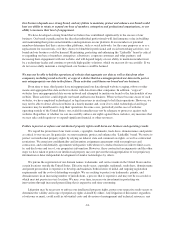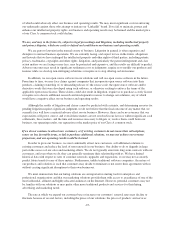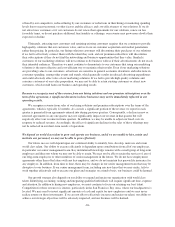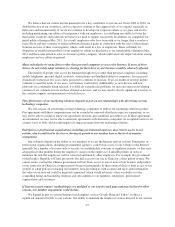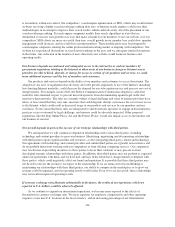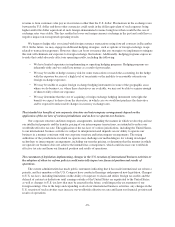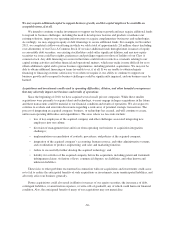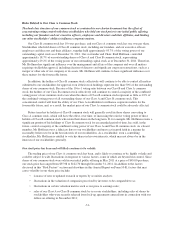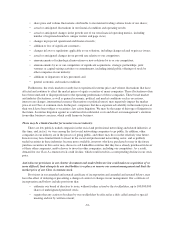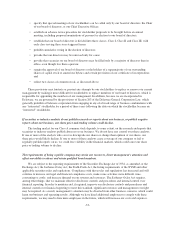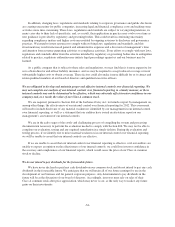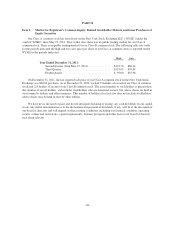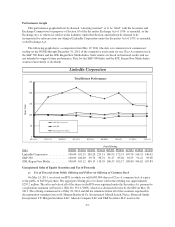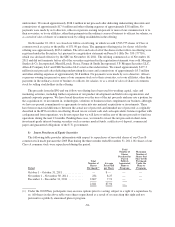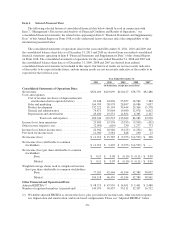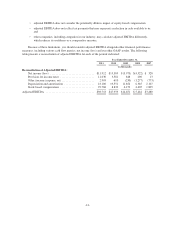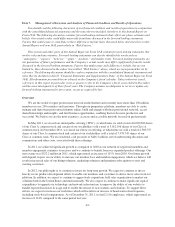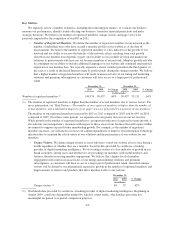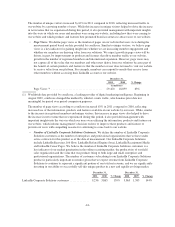LinkedIn 2011 Annual Report Download - page 38
Download and view the complete annual report
Please find page 38 of the 2011 LinkedIn annual report below. You can navigate through the pages in the report by either clicking on the pages listed below, or by using the keyword search tool below to find specific information within the annual report.In addition, changing laws, regulations and standards relating to corporate governance and public disclosure
are creating uncertainty for public companies, increasing legal and financial compliance costs and making some
activities more time consuming. These laws, regulations and standards are subject to varying interpretations, in
many cases due to their lack of specificity, and, as a result, their application in practice may evolve over time as
new guidance is provided by regulatory and governing bodies. This could result in continuing uncertainty
regarding compliance matters and higher costs necessitated by ongoing revisions to disclosure and governance
practices. We intend to invest resources to comply with evolving laws, regulations and standards, and this
investment may result in increased general and administrative expenses and a diversion of management’s time
and attention from revenue-generating activities to compliance activities. If our efforts to comply with new laws,
regulations and standards differ from the activities intended by regulatory or governing bodies due to ambiguities
related to practice, regulatory authorities may initiate legal proceedings against us and our business may be
harmed.
As a public company that is subject to these rules and regulations, we may find that it is more expensive for
us to obtain director and officer liability insurance, and we may be required to accept reduced coverage or incur
substantially higher costs to obtain coverage. These factors could also make it more difficult for us to attract and
retain qualified members of our board of directors and qualified executive officers.
We are obligated to develop and maintain proper and effective internal controls over financial reporting. We
may not complete our analysis of our internal controls over financial reporting in a timely manner, or these
internal controls may not be determined to be effective, which may adversely affect investor confidence in our
company and, as a result, the value of our Class A common stock.
We are required, pursuant to Section 404 of the Sarbanes-Oxley Act, to furnish a report by management on,
among other things, the effectiveness of our internal control over financial reporting for 2012. This assessment
will need to include disclosure of any material weaknesses identified by our management in our internal control
over financial reporting, as well as a statement that our auditors have issued an attestation report on our
management’s assessment of our internal controls.
We are in the early stages of the costly and challenging process of compiling the system and processing
documentation necessary to perform the evaluation needed to comply with Section 404. We may not be able to
complete our evaluation, testing and any required remediation in a timely fashion. During the evaluation and
testing process, if we identify one or more material weaknesses in our internal control over financial reporting,
we will be unable to assert that our internal controls are effective.
If we are unable to assert that our internal control over financial reporting is effective, or if our auditors are
unable to express an opinion on the effectiveness of our internal controls, we could lose investor confidence in
the accuracy and completeness of our financial reports, which would cause the price of our Class A common
stock to decline.
We do not intend to pay dividends for the foreseeable future.
We have never declared or paid any cash dividends on our common stock and do not intend to pay any cash
dividends in the foreseeable future. We anticipate that we will retain all of our future earnings for use in the
development of our business and for general corporate purposes. Any determination to pay dividends in the
future will be at the discretion of our board of directors. Accordingly, investors must rely on sales of their
Class A common stock after price appreciation, which may never occur, as the only way to realize any future
gains on their investments.
-34-


